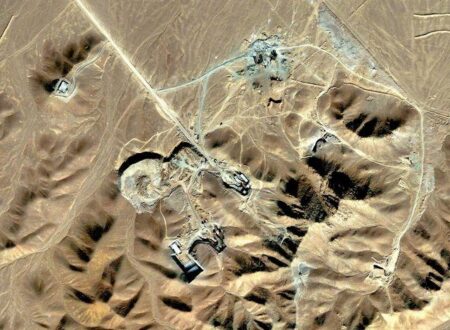Renewed Tensions: The Kashmir Incident and Its Implications for India-Pakistan Relations
In a important escalation of ongoing disputes, India and Pakistan find themselves in a renewed diplomatic standoff following a recent incident in the contentious region of Kashmir. This event, which reportedly resulted in multiple casualties, has sparked a wave of mutual accusations between the two nations, further heightening an already precarious situation. As both governments ramp up their political and military rhetoric, global observers express concern over the potential for increased violence in an area historically marked by conflict. This latest development highlights the delicate nature of peace in kashmir and raises critical questions about the trajectory of Indo-Pakistani relations amid rising tensions.
Impact of the Kashmir Incident on India-Pakistan relations
The recent violence in Kashmir has considerably intensified existing frictions between India and Pakistan, leading both countries to engage in retaliatory measures that threaten regional stability.India’s government has pledged to take decisive action by escalating military operations along the Line of Control (LoC), resulting in increased artillery exchanges and troop movements. Reports suggest that both nations have fortified their positions with enhanced military drills and surveillance efforts aimed at deterring any further incursions.
On the other hand, Pakistan has criticized India’s aggressive military stance, accusing it of exacerbating tensions instead of pursuing constructive dialogue. Key international players are advocating for mediation to help de-escalate this spiraling conflict as both governments face domestic pressures to demonstrate strength. The global community remains vigilant about how this renewed cycle of violence coudl destabilize not only South Asia but also broader international security frameworks.
- Territorial Disputes: Ongoing disagreements regarding Kashmir’s status continue to fuel tensions.
- Military Buildup: Increased troop deployments signal heightened readiness on both sides.
- Global Response: Calls from various countries for mediation efforts are growing louder.
Diplomatic Strain: Analyzing Both Nations’ Response Strategies
The current escalation between India and Pakistan is evident through strained diplomatic channels as each nation adopts more confrontational postures. India’s approach includes bolstering its military presence near the LoC while conducting extensive exercises with additional troops mobilized for potential conflicts. To reinforce its position internationally, India seeks support from influential allies while emphasizing its counter-terrorism narrative concerning Kashmir.
Pursuing a different strategy, Pakistan aims to draw attention to alleged human rights abuses occurring within Kashmir while enhancing its own military readiness against possible Indian actions. The deteriorating dialogue reflects a shift away from diplomacy towards confrontational tactics that could have enduring consequences for regional stability.
- Cessation of Trade: Pakistan’s suspension of trade with India impacts numerous sectors economically.
- Cultural Withdrawals: Both nations are scaling back cultural exchanges and sporting events as part of their response strategies.
- Erupting Rhetoric: Public speeches criticizing each other’s policies have intensified from both governments.
This situation necessitates careful observation; continued hostilities risk triggering severe repercussions that could jeopardize regional peace efforts. Recent communications from foreign ministries indicate some willingness to engage diplomatically; though, basic disagreements over Kashmir remain significant obstacles to resolution.
De-escalation Pathways: Recommendations for Mediators Seeking Regional Stability
The rising tensions following recent attacks underscore an urgent need for international mediators focused on fostering dialogue between India and Pakistan. Effective de-escalation can be achieved through trust-building initiatives among conflicting parties; key recommendations include:
- Create back-channel communication avenues allowing private discussions free from public scrutiny;
- sponsor regular dialogues involving diverse stakeholders such as civil society groups and local leaders;
- Pursue confidence-building measures like joint humanitarian projects within Jammu & Kashmir addressing root causes behind conflicts;
Mediators should also advocate collaborative approaches involving neutral regional powers sharing responsibilities toward maintaining peace effectively—sustainable conflict resolution can be supported through initiatives such as:
- A bilateral forum promoting economic cooperation alongside collaborative projects;
- joint monitoring systems ensuring adherence to ceasefire agreements alongside local peace endeavors;
- Educational exchange programs designed specifically targeting mutual respect among younger generations across borders;
Conclusion: Insights into Future Prospects
The intensifying discord between India and Pakistan following recent incidents underscores how fragile peace remains within this region . As accusations fly back-and-forth coupled with militaristic displays , prospects loom ominously regarding future conflicts . Global observers urge restraint amidst escalating rhetoric , highlighting increasing necessity surrounding diplomatic engagement aimed at achieving resolutions crucially needed ensure long-term stability throughout South Asia . While challenges persist ahead , commitment towards constructive dialogues may ultimately pave pathways leading toward peaceful coexistence moving forward .




